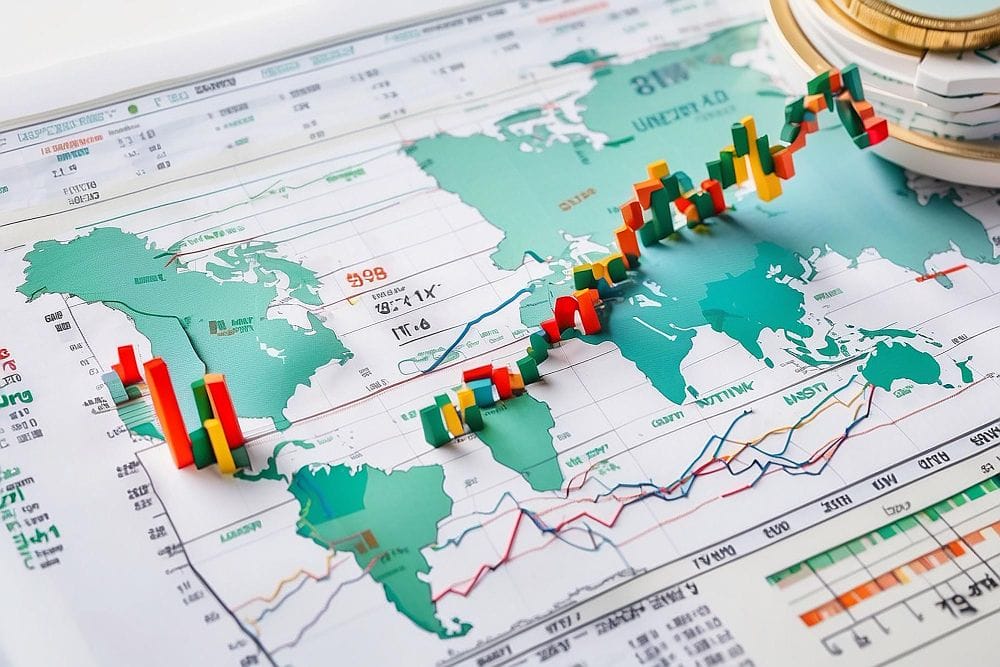Trading in the Japanese market can feel like riding a roller coaster blindfolded. One moment, you’re climbing to exhilarating heights, and the next, you’re plummeting into a stomach-churning descent. But fear not! Japanese Leading Economic Indicators are here to help you navigate these turbulent tracks. These indicators offer critical insights into where the Japanese economy is headed, allowing trading businesses to make informed decisions. Let’s dive into these indicators and understand how they can be your guiding light in the often murky waters of trading.
What Are Leading Economic Indicators?
Leading Economic Indicators (LEIs) are metrics that predict future economic activity. Think of them as the fortune tellers of the economic world. They give you a sneak peek into what’s coming up, enabling businesses and investors to strategize accordingly. For Japan, a country with a unique economic structure and significant global impact, these indicators are crucial.

Why Are They Important?
Imagine trying to drive a car without a speedometer, gas gauge, or GPS. You’d be lost and likely stranded. LEIs are like the dashboard of your trading vehicle. They help you gauge the economic environment, forecast potential market movements, and adjust your strategies to stay on course.
Key Japanese Leading Economic Indicators
Let’s break down the essential LEIs that every trading business should keep an eye on when dealing with the Japanese market.
1. Tankan Survey
What is it?
The Tankan Survey is a quarterly poll conducted by the Bank of Japan. It measures business sentiment among major manufacturers and non-manufacturers.
Why does it matter?
A positive Tankan Survey indicates business optimism, which often leads to increased investment and hiring. Conversely, a negative survey suggests economic downturns. For traders, this survey can signal whether to expect bullish or bearish market conditions.
2. Industrial Production Index
What is it?
This index tracks the output of factories and mines. It’s a reliable measure of the industrial sector’s health.
Why does it matter?
Rising industrial production suggests economic expansion, while a decline signals contraction. Traders can use this data to anticipate changes in stock prices of manufacturing companies and related sectors.
3. Consumer Confidence Index
What is it?
This index measures how optimistic or pessimistic consumers are about their financial situation and the economy.
Why does it matter?
High consumer confidence usually translates to increased spending, boosting economic growth. For trading businesses, this can indicate potential stock market gains, particularly in retail and consumer goods sectors.
4. Stock Market Performance
What is it?
The performance of stock indices like the Nikkei 225 can be a leading indicator of economic health.
Why does it matter?
Rising stock prices often reflect economic optimism, while falling prices may signal trouble. Traders can use stock market trends to gauge overall economic sentiment and adjust their portfolios accordingly.
5. Housing Starts
What is it?
Housing starts refer to the number of new residential construction projects begun in a given period.
Why does it matter?
An increase in housing starts indicates economic confidence and growth, as it suggests that individuals and businesses are investing in property. This can be a bullish signal for the market.
Digging Deeper: The Impact on Trading
Understanding these indicators is one thing, but applying them to trading strategies is another. Let’s see how these indicators can directly impact trading decisions.
Anticipating Market Movements
LEIs can give traders a head start on market movements. For instance, if the Tankan Survey shows positive business sentiment, traders might expect an uptick in stock prices. Conversely, a drop in the Industrial Production Index could signal a looming downturn, prompting traders to adopt more defensive strategies.
Sector-Specific Strategies
Different LEIs impact various sectors differently. For example, a rise in the Consumer Confidence Index might lead traders to invest more in consumer goods and retail stocks, anticipating higher sales. On the other hand, a decline in housing starts might make real estate stocks less attractive.
Timing Is Everything
In trading, timing can be the difference between profit and loss. LEIs help traders time their entries and exits more effectively. By analyzing these indicators, traders can enter positions ahead of favorable economic changes and exit before potential downturns.
Challenges in Using Leading Economic Indicators
While LEIs are invaluable, they are not foolproof. There are several challenges traders must navigate.
Lagging Data
Some LEIs are not reported in real-time. There is often a lag between data collection and publication, which can limit their immediate usefulness.
False Signals
LEIs can sometimes give false signals, leading traders to make poor decisions. It’s essential to corroborate indicator data with other sources and market analysis.
Global Influences
Japan’s economy does not operate in a vacuum. Global economic events, such as trade tensions or natural disasters, can impact Japanese LEIs, making it harder to predict market movements accurately.
Best Practices for Trading Businesses
Given these challenges, how can trading businesses best utilize Japanese LEIs?
Diversify Your Sources
Relying on a single LEI can be risky. Use multiple indicators to get a comprehensive view of the economic landscape.
Stay Updated
Timeliness is crucial in trading. Ensure you have access to the latest data and news updates to make informed decisions.

Combine Technical and Fundamental Analysis
LEIs are part of fundamental analysis. Combine them with technical analysis to refine your trading strategies and improve accuracy.
Adapt and Learn
The market is always changing. Adapt your strategies based on new data and learn from past trades to improve your future performance.
Case Study: A Trading Business in Action
To illustrate the application of Japanese LEIs, let’s look at a hypothetical trading business, Tokyo Traders Ltd.
Initial Analysis
Tokyo Traders Ltd. begins by analyzing the latest Tankan Survey, which indicates positive business sentiment. They also notice an uptick in the Industrial Production Index.
Strategic Decisions
Based on this data, they decide to increase their holdings in manufacturing stocks, anticipating growth in this sector. They also note a rise in the Consumer Confidence Index, prompting them to invest in consumer goods.
Ongoing Monitoring
Tokyo Traders Ltd. continuously monitors these indicators, adjusting their portfolio as new data emerges. When housing starts begin to decline, they reduce their exposure to real estate stocks.
Outcome
By effectively utilizing LEIs, Tokyo Traders Ltd. manages to capitalize on economic growth periods and minimize losses during downturns, demonstrating the practical value of these indicators.
The Future of Japanese Economic Indicators
The world of economic indicators is ever-evolving. With advancements in technology and data analytics, the accuracy and timeliness of these indicators are expected to improve. For trading businesses, this means even better tools to navigate the complex economic landscape.
AI and Machine Learning
Artificial Intelligence (AI) and Machine Learning (ML) are revolutionizing how we interpret economic data. These technologies can analyze vast amounts of data quickly, identifying patterns and trends that might be missed by human analysts.
Real-Time Data
As technology advances, the lag time in reporting economic indicators is decreasing. Real-time data will allow traders to make even more timely and accurate decisions.
Global Integration
With global economies becoming increasingly interconnected, there’s a growing need for integrated economic indicators that consider global influences. This will help traders get a more holistic view of the market.
Conclusion
Navigating the Japanese market without the guidance of Leading Economic Indicators is like sailing in uncharted waters without a compass. These indicators provide invaluable insights that can help trading businesses anticipate market movements, make informed decisions, and ultimately achieve greater success. By understanding and effectively utilizing indicators like the Tankan Survey, Industrial Production Index, Consumer Confidence Index, stock market performance, and housing starts, traders can gain a competitive edge. Despite the challenges, with the right strategies and continuous adaptation, the use of LEIs can significantly enhance trading performance. Embrace these economic predictors, and let them guide your trading journey in the dynamic Japanese market.
FAQs
1. What are Leading Economic Indicators (LEIs)?
Leading Economic Indicators are metrics that predict future economic activity, helping businesses and investors make informed decisions based on anticipated market conditions.
2. Why are Japanese Leading Economic Indicators important for trading businesses?
These indicators provide critical insights into the future direction of Japan’s economy, allowing traders to anticipate market movements and strategize accordingly.
3. How can the Tankan Survey impact trading decisions?
The Tankan Survey measures business sentiment. Positive results can signal economic growth, prompting traders to adopt bullish strategies, while negative results may suggest a downturn.
4. What challenges do traders face when using LEIs?
Challenges include data lag, the potential for false signals, and the impact of global economic events on Japanese indicators.
5. How can trading businesses effectively use LEIs?
Trading businesses should diversify their sources, stay updated with the latest data, combine LEIs with technical analysis, and continuously adapt their strategies based on new information.









